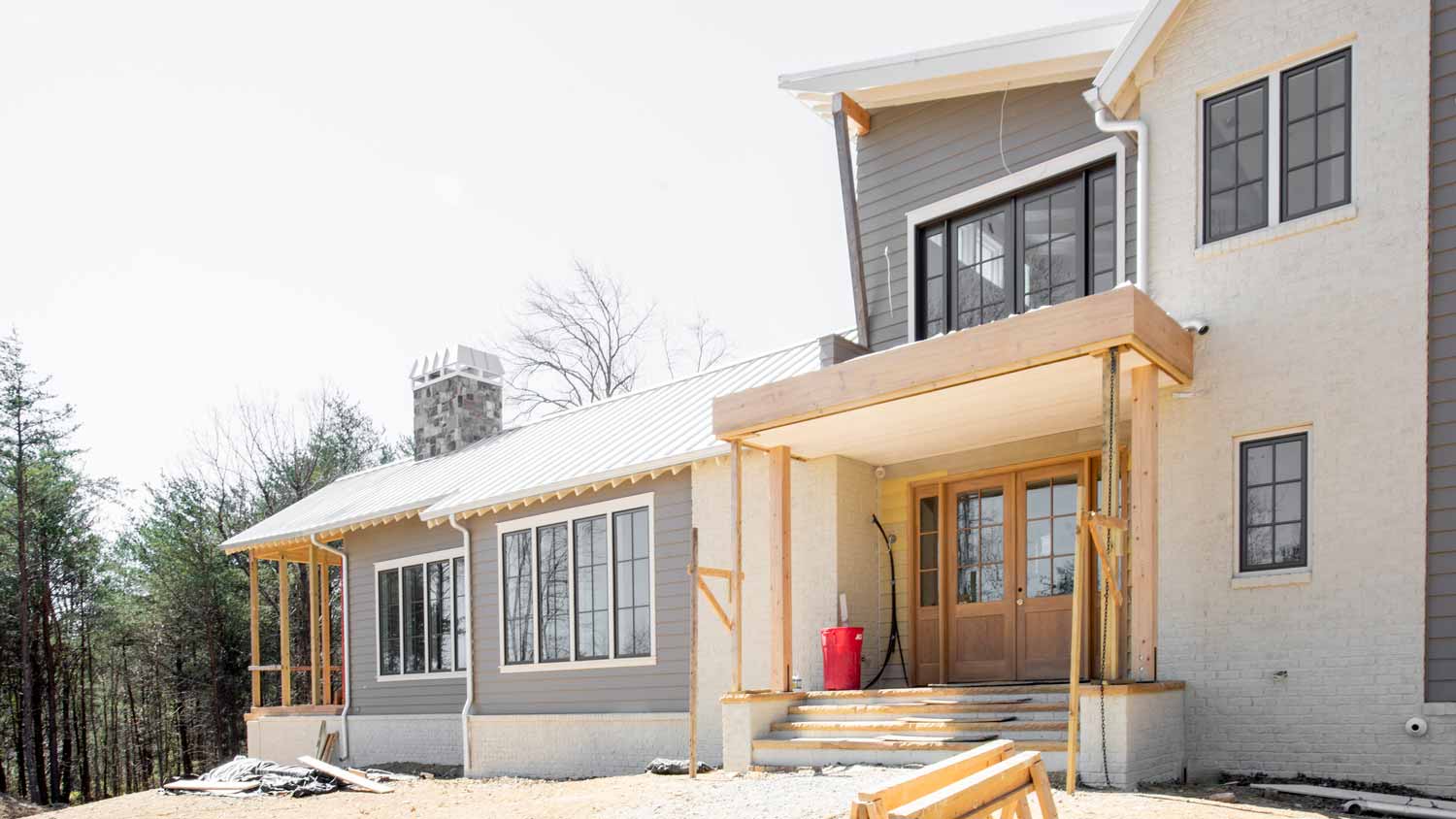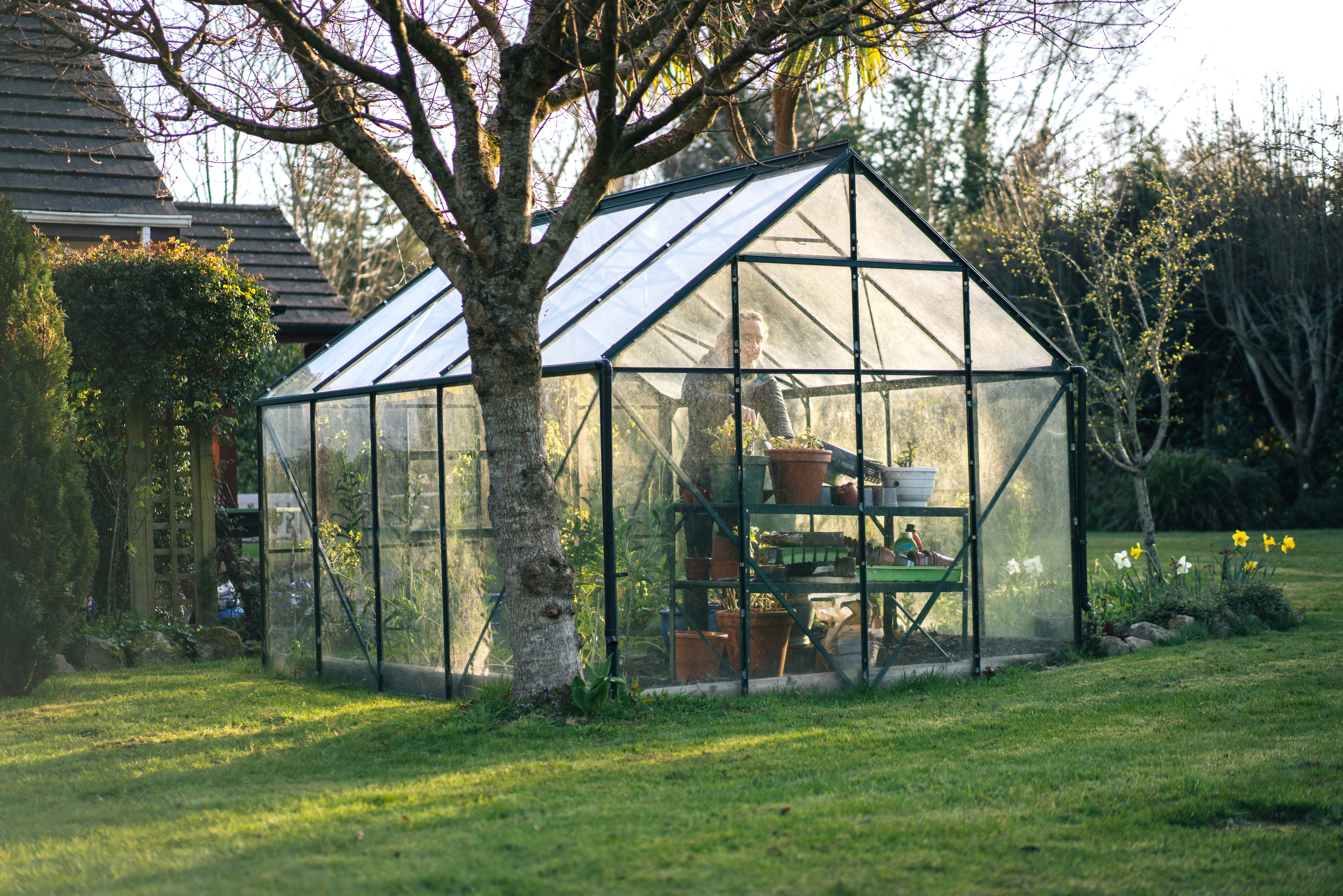
The cost to build a brick house is high, but the aesthetic and durability can be well worth the investment if you’re looking for something unique.
Tearing your roof off might actually help with spacing


Adding a second floor can give you more space without moving or sacrificing yard space.
The average cost of this project is $175,000.
Factors such as cost, foundation, time frame, and building codes should be considered before starting.
You may need to relocate for this project, depending on the type of addition you want.
When you need more space, following yet another organization hack sometimes just won’t do. But adding a second story to a house can be a worthwhile option, even if it’s not the most talked-about method when homeowners say they need more space. In this guide, we’ll cover what makes adding a second floor so great, things to consider before starting this project, and how to hire the right pro to get the job done.

For some homeowners, adding a second story to a house sounds like a project that’s way above their needs, especially if you only need a couple hundred extra square feet. But here’s the thing: Not all second-floor additions are the same. We’ll cover some of the top options below.
A full addition is a second-story build over your entire existing floor plan. While this will cost more than other options, it also gives you more living space and can be easier to tie into your exterior design. Plus, it’s a great way to get that deck you’ve always wanted, with loads of second-story deck ideas to consider.
However, something worth noting is that these additions will require you to relocate since your entire roof must be removed then replaced. Also, there might be some foundation requirements for adding a second story with a full addition that you should keep in mind.
If you don’t need a whole second floor, then a partial addition is a more budget-friendly option to increase your living space. These additions can include a primary suite, home office, or entertainment room. There's not much of a difference between full and partial second-story additions in terms of process, but most partial additions won’t require moving out.
These additions are a great way to build up your home without moving out for months. Modular, or prefab, second-story additions are constructed off-site, typically in a controlled factory setting, then transported to your home when it’s time to assemble. This option can save time on on-site construction and money on labor fees. However, you might not have the same design flexibility with this addition as with one built and assembled at your home.
Similar to a partial addition, an over-garage addition is ideal for homeowners who only want to add a specific room to their home. These are great for guest suites and home offices that are a little separated from the hustle and bustle of the main living space. However, these second-floor additions might result in a boxy exterior and require some planning, like adding a dormer, to get the interior space you need with an exterior design you like.

While adding a second story to your home might sound like the best solution to spacing problems, there are some things to remember to help you go into this project without any surprises.
It goes without saying, but how much this project is going to cost is something you’ll want to consider. The cost to add a second story to a house is $175,000 on average, but it can range from $80,000 to $600,000, depending on your needs. Some factors that will impact your total cost are material, labor fees, building permits, floor plan, finishes, type of addition you want, and if you’ll need temporary housing.
While labor takes up a bulk of the total project cost, DIYing the entire project isn’t the best way to save some of your hard-earned money unless you’re an experienced builder. But you can cut remodeling costs by painting the rooms and opting for budget-friendly finishes that’ll leave your home beautiful without the higher price tag.
There are some technical aspects of this project you must contemplate before planning for the second floor of your dreams. For example, your location might have zoning codes limiting how much square footage is allowed for your lot size. There might also be height restrictions you’d have to adhere to so your new home isn’t an inconvenience to your neighbor and their lovely abode. It’s important to check with your local municipality regarding any rules and regulations for second-story additions.
Most single-story homes aren’t built to support a second floor. A structural engineer can help you determine what should be done to reinforce your foundation. This process might also involve strengthening your basement walls. While hiring this pro and strengthening your foundation are included in the total cost, it's still important to consider.
Without a doubt, when you add a second story to the house, you need a way to access your new home addition. You’ll need to install stairs, but your staircase will take up some of your living space on your main floor. You can work with an architect to find the best placement so it doesn’t make the flow of your house feel awkward.
More space also means upgrading your HVAC and water heater systems and adding additional plumbing and electrical work. Depending on the conditions of your main floor utility systems, you might need to upgrade all the wiring, plumbing, and ducts around your home to make sure they’re up to code.
Rome wasn’t built in a day, nor will your second story (even though one can hope). Many components will impact this project length, like getting all the necessary permits and finalizing the plans and designs with the architect, structural engineer, and interior designer. Just this part of the process can take anywhere from weeks to months. On average, you can expect this project to take six months to a year.
Unlike remodels in an isolated part of your home, second-story additions literally take the roof from over your head. So, depending on the type of second-floor addition you want, you might need to move out of your home for the project’s duration.
If you have family or friends nearby you can live with during this time, you can save money on some pretty hefty relocation fees. But if you don’t (or prefer not to live with family during the entire remodel), you’ll need to factor in the cost to temporarily move somewhere else until your second story is complete.
While this one is more for aesthetic reasons, it’s still worth mentioning. Depending on when your home was built, your main floor might have windows and siding that aren’t being made anymore or has a higher price tag to replicate. You’ll need to decide if you want the same exterior features throughout or if you’re OK with the first and second floor windows and siding looking different.
Also, some second-story floor plans can give your home a symmetrical look—an identical first and second floor overall design. If this isn’t your style, you can always spruce up your home’s exterior look by adding shutters or dormers or considering a roof with multiple rooflines. You’ll need to work with your pro to design a home exterior that fits your preference.
Taking the roof off your home is a pretty serious project. You’re probably wondering if going through with such a drastic method of adding to your home is really worth it? While we can’t make that decision for you, let’s look at a few reasons that make this project the cream of the crop for homeowners.
One of the most noteworthy pros of adding a second story to your home is that you’ll have more living space. For most homeowners, lifestyle changes like family moving in, hosting more parties, having more kids, or needing a dedicated home office can strain their available living area. But when you add a second story, you’ll have the space you need for more bedrooms, bathrooms, and closets, making your home more spacious.
Location is a major factor when purchasing a home. And when you need more space, it’s one of the hardest things to let go, especially when you’ve found a great neighborhood for your family to grow in. Adding a second story to your home can make this a win-win situation for you, where you can stay where you’re at and get the additional space you need.
Assuming you'd be selling and then buying a new home at fair market value, renovating your existing home will make sense financially. Moving requires a lot of transaction costs, mainly the commissions and closing costs from a bank which can add up to a couple of percentage points on each transaction.
Your outdoor living space is valuable. When you need more space, the yard is sometimes the first to go. But when you build up instead of out, you get more living space without cutting into your available outdoor space.
For a project of this size, there are many pros you’ll need to get the job done successfully. But to manage the ins and outs of the addition, you’ll need to hire a home addition contractor near you. They’ll be responsible for the subcontractors your project needs.
Since this is such an extensive project, here are a few questions to ask to make sure your pro is up for the task at hand:
Ask to see their license, bonds, and insurance: You don’t want to entrust your entire home to someone who doesn’t have the necessary experience to get it done safely. And even if they are licensed (make sure to verify it), accidents happen. You’ll be responsible for any subpar work or repairs if they don't have bonds or insurance.
Ask if they have experience with this type of project: You want someone who has experience adding a second story to a house. Some parts of this project could be overlooked by someone who’s never completed one like it.
Ask for referrals: If you know someone who added a second floor to their home, ask who they hired and if they would recommend their contractor.
From average costs to expert advice, get all the answers you need to get your job done.

The cost to build a brick house is high, but the aesthetic and durability can be well worth the investment if you’re looking for something unique.

Dreaming of building your own home from the ground up? Learn how much it costs to build a house yourself and if it’s worth it to skip the pro on this project.

If home is where the barn is, a barndominium may be the dream house you’ve been looking for. Here are all the details you need to know about barndominium costs.

A greenhouse can add natural beauty to your yard. Learn about standard greenhouse dimensions and how to choose the right size.

It’s exciting to start planning your dream home, but first, you need to find the right professional to manage the work. Discover who to hire to build a house.

Planning a home improvement? Learn which home improvements could lower your insurance rates for the highest ROI—and which could increase your premiums.